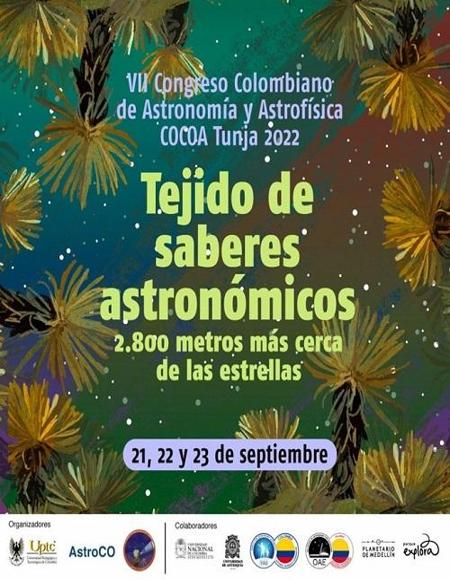Método de distribución de partículas para el colapso homólogo de una esfera

Resumen
En este trabajo se estudia el colapso adiabático de una esfera autogravitante mediante una simulación
computacional realizada con Gadget-2. Este paquete tiene un arquetipo de simulación para el colapso
homólogo de una esfera unidad, la cual se representa mediante una serie de cascarones esféricos
concéntricos, en donde se distribuyen las partículas de manera equidistante para representar una densidad
ρ ~ r2. Se ha creado otro método basado en considerar la esfera unidad constituida por pequeñas esferas
en su interior. El problema se reduce a empaquetar las esferas pequeñas de la mejor manera posible.
Este problema ha sido resuelto en física estado sólido. Para la simetría esférica el máximo factor de
empaquetamiento lo da una estructura de Bravais tipo FCC. En este trabajo se demuestra que el arquetipo de
Gadget es equivalente a una estructura CS que tiene un factor de empaquetamiento menor. En consecuencia,
la mejor manera de representar una esfera de gas computacionalmente es mediante una distribución FCC.
Palabras clave
Colapso homologo, Nube molescular, Gadget-2
Citas
- Josh Barnes and Piet Hut. A hierarchical o (n log n) force-calculation algorithm. nature, 324(6096): 446–449, 1986. DOI: https://doi.org/10.1038/324446a0
- William Brass, Peter. Moser and János Pach. Research problems in discrete geometry. Springer Science & Business Media, 2006.
- B. Czaja. Master degree in astronomy. Hydrodinamic simulations of star formation from molecular could collisions. Master’s thesis, Department of physics and astronomy, 2016.
- S. Diehl, G. Rockefeller, C. L. Fryer, D. Riethmiller, and T. S. Statler. Generating Optimal Initial Conditions for Smoothed Particle Hydrodynamics Simulations. Publications of the Astronomical Society of Australia, 32:e048, December 2015.doi: 10.1017/pasa.2015.50. DOI: https://doi.org/10.1017/pasa.2015.50
- August E. Evrard. Beyond n-body: 3d cosmological gas dynamics. Monthly Notices of the Royal Astronomical Society, 235, 911-934., 1988. DOI: https://doi.org/10.1093/mnras/235.3.911
- Lars Hernquist and Neal Katz. TREESPH: A Unification of SPH with the Hierarchical Tree Method. Astrophysical Journal Supplement Series, 70:419, June 1989. doi: 0.1086/191344. DOI: https://doi.org/10.1086/191344
- James Hopwood Jeans. I. the stability of a spherical nebula. Philosophical Transactions of the Royal Society of London. Series A, Containing Papers of a Mathematical or Physical Character, 199 (312-320):1–53, 1902. DOI: https://doi.org/10.1098/rsta.1902.0012
- Ali Katanforoush and Mehrdad Shahshahani. Distributing points on the sphere, i. Experimental Mathematics, 12(2):199–209, 2003. DOI: https://doi.org/10.1080/10586458.2003.10504492
- Charles Kittel. Introduction to solid state physics. John Wiley & Sons, 8th edition, 2005.
- Daniel J. Price. Smoothed particle hydrodynamics and magnetohydrodynamics. Journal of Computational Physics, 231(3):759–794, 2012. DOI: https://doi.org/10.1016/j.jcp.2010.12.011
- Cody Raskin and J. Michael Owen. Rapid optimal sph particle distributions in spherical geometries for creating astrophysical initial conditions. The Astrophysical Journal, 820(2):102, 2016. DOI: https://doi.org/10.3847/0004-637X/820/2/102
- Edward B. Saff and Amo BJ Kuijlaars. Distributing many points on a sphere. The mathematical intelligencer, 19(1):5–11, 1997. DOI: https://doi.org/10.1007/BF03024331
- Volker Springel. Gadget: a code for collisionless and gasdynamical cosmological simulations. New Astronomy, 2001. DOI: https://doi.org/10.1016/S1384-1076(01)00042-2
- Volker Springel. The cosmological simulation code gadget-2. Monthly notices of the royal astronomical society, 364(4):1105–1134, 2005. DOI: https://doi.org/10.1111/j.1365-2966.2005.09655.x
- Volker Springel. Smoothed particle hydrodynamics in astrophysics. Annual Review of Astronomy and Astrophysics, 48:391–430, 2010. DOI: https://doi.org/10.1146/annurev-astro-081309-130914
- Steven W. Stahler and Francesco Palla. The formation of stars. John Wiley & Sons, 2008.
- Pieter Merkus Lambertus Tammes. On the origin of number and arrangement of the places of exit on the surface of pollen-grains. Recueil des travaux botaniques néerlandais, 27(1):1–84, 1930.